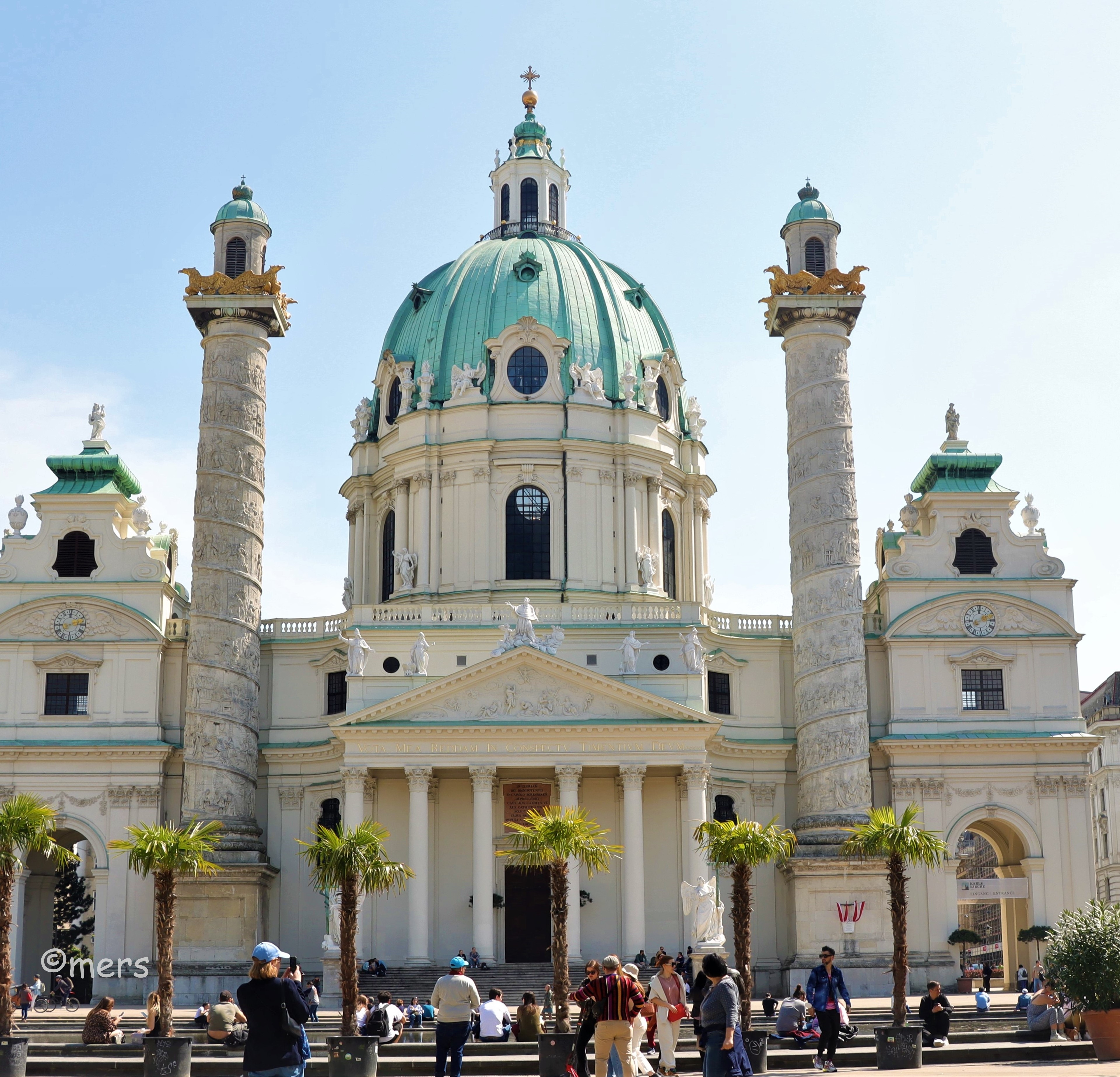
Hello Hivers!
Today I will be sharing with you the KARLSKIRCHE I visited days ago. It is a baroque style church that is a pride of the city of Vienna and is one of the most important sacred buildings in Central Europe. It is also the greatest work of Fischer von Erlach (both father and son). Located in the 4th District, the church was a pledge of the then Habsburg Emperor Charles VI to its people. The plague epidemic raged furiously in Vienna in 1713 that killed about eight thousand people.
The city was hit by plague epidemic many times before 1713, which according to history raged 7 times within 10 years. In lieu of these frightening circumstances, the emperor ordered a church erected in honor of St. Charles Borromeo (15348-1584), the patron saint of the plague victims. The foundation had been laid 2 years after the epidemic ended in 1714. This had not only been an offering of the Emperor for the Austrians but for the whole of the Habsburg Empire.
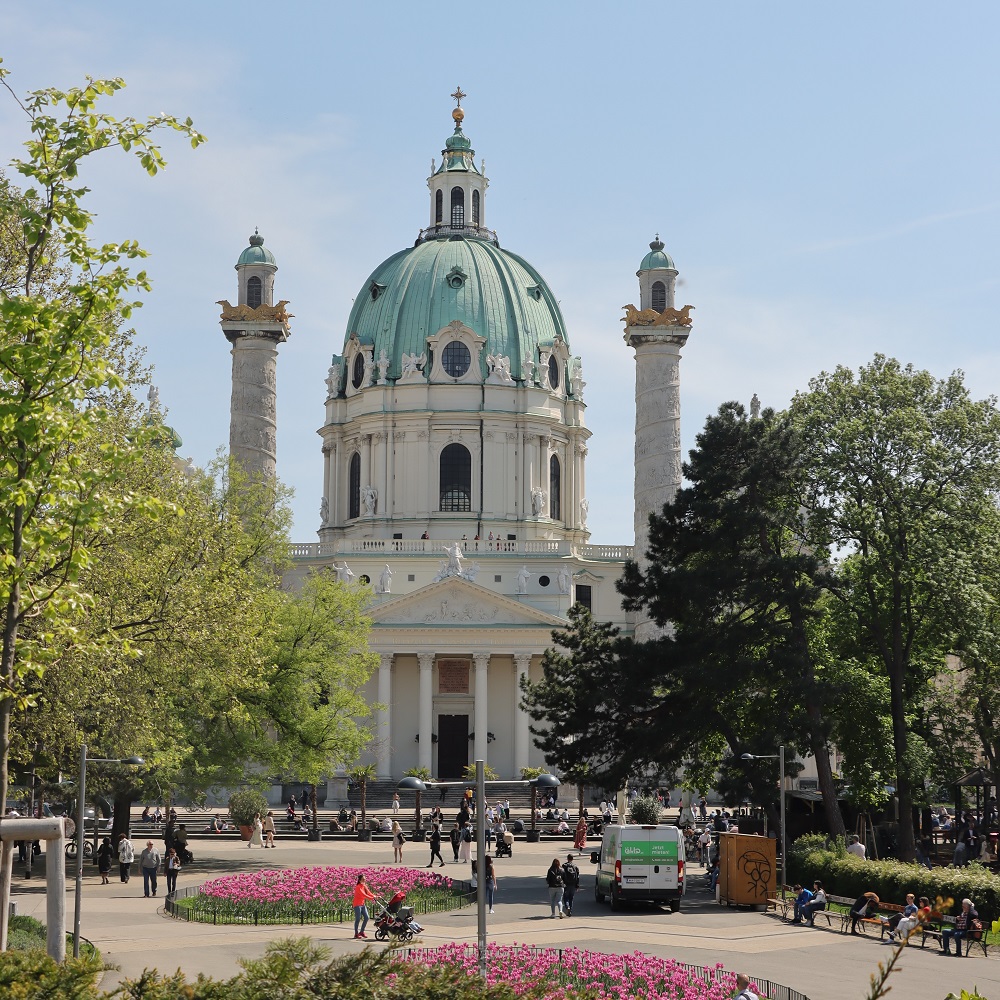
Architecture
The architectural style of the church had been drawn originally in Baroque by the architect Johann Bernhard Fischer von Erlach, who won the architectural competition set for the purpose and he was commissioned to supervise the construction. Baroque architecture became famous in the early 17th century that began in Italy… It became a trendsetter kind of architecture because it was very decorative in all the exterior and interior aspects of the building. This church showed the importance of details in every corner as you can see in the lavish use of materials contributed by many lands and holdings under the Habsburg rule.
The elder Johann B. Fischer von Erlach did not finish the construction of the church since he died in 1723. His son Joseph Emmanuel Fischer von Erlach continued the works of his father, finally completing the church in 1737 after 20 years of construction. The younger Joseph made small alterations to the plan but successfully combined many architectural styles from the Greek, Roman, Byzantine and Ottoman architecture.
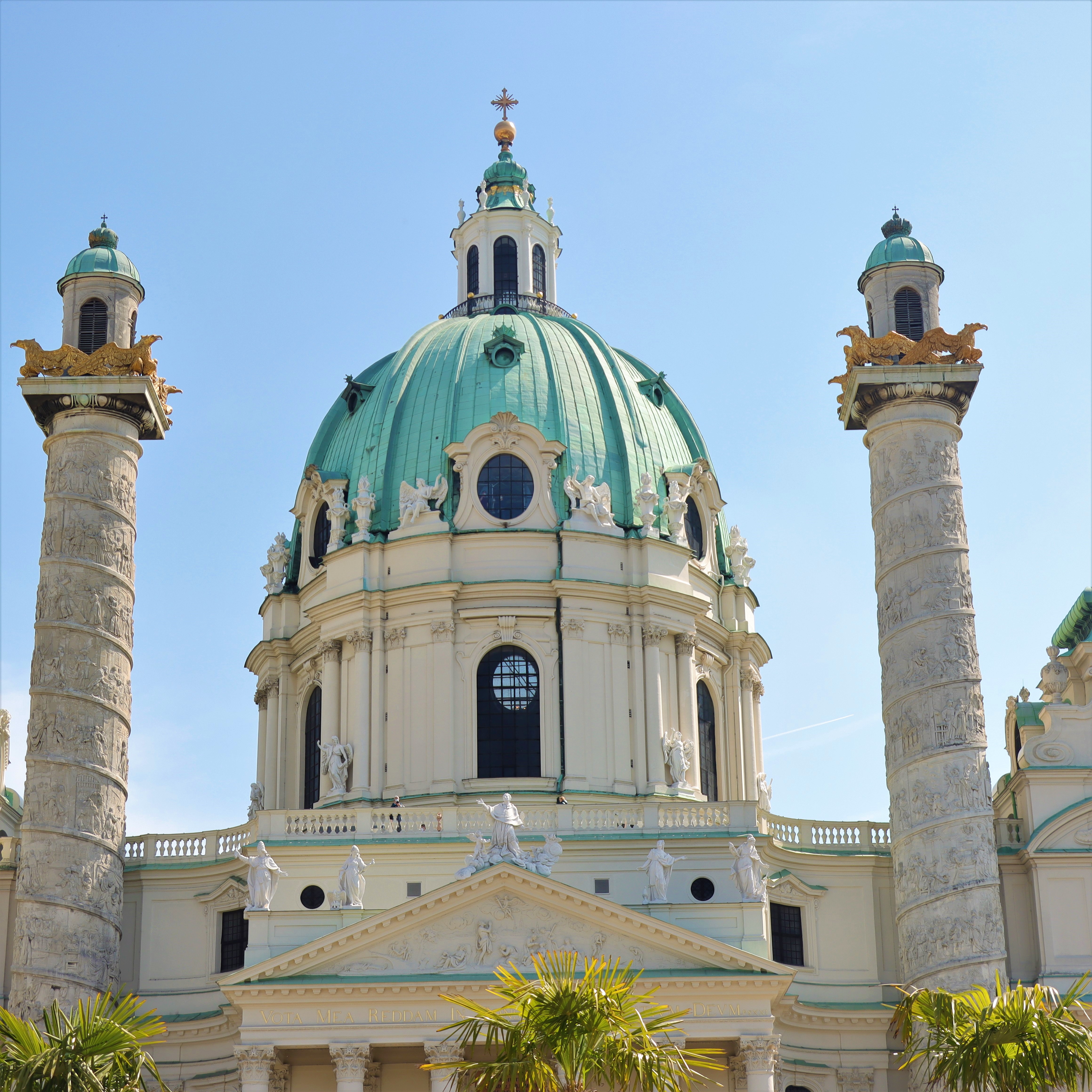
Two Columns in Bas relief Sculpture
Karlskirche has two massive pillars/columns (above image), each 47 meters high and erected on each side of the dome. Inspired by the Boaz and Jachin temple in Jerusalem, each symbolized imperial power and had been sculptured in a spiral bas relief. Each of the Columns depicted the life of St. Charles Borromeo, who was said to be the patron saint of the plague sufferers.
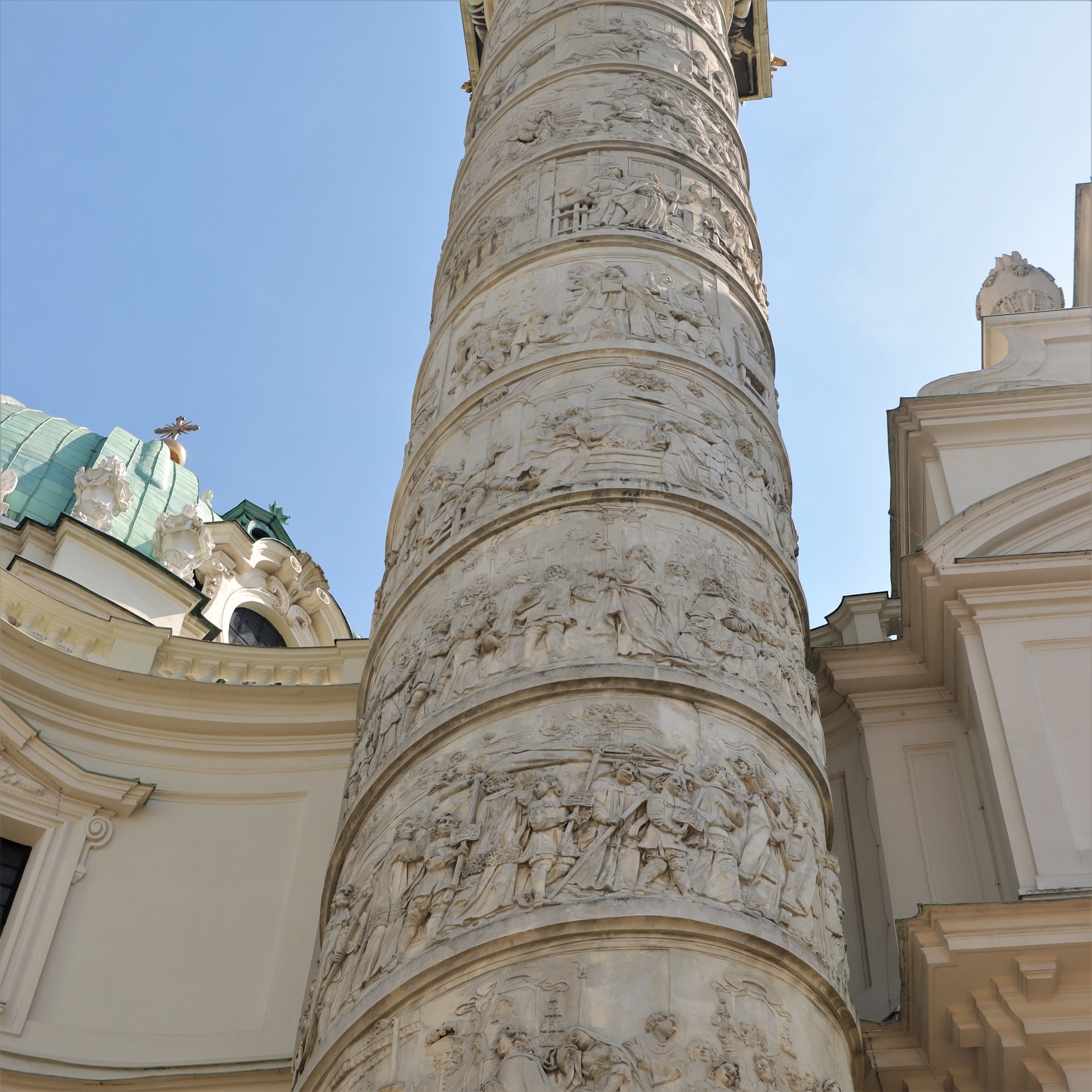
Spiral bas relief depicted the life of St. Charles Borromeo
What is bas-relief? Source
The term originally stems from the Italian phrase basso-relievo which directly translates to low relief. Artists create a bas-relief by sculpting onto a 2D plane to create and accentuate figures and objects, producing a 3D appearance which can be viewed from all angles with little distortion. Alternatively, material can also be carved from a 2D plane, a technique called Graffito. The prominent figures that have been carved into or added to the surface remain fairly shallow. If the subject appears to be more than halfway raised from its background, this is classed as high relief.
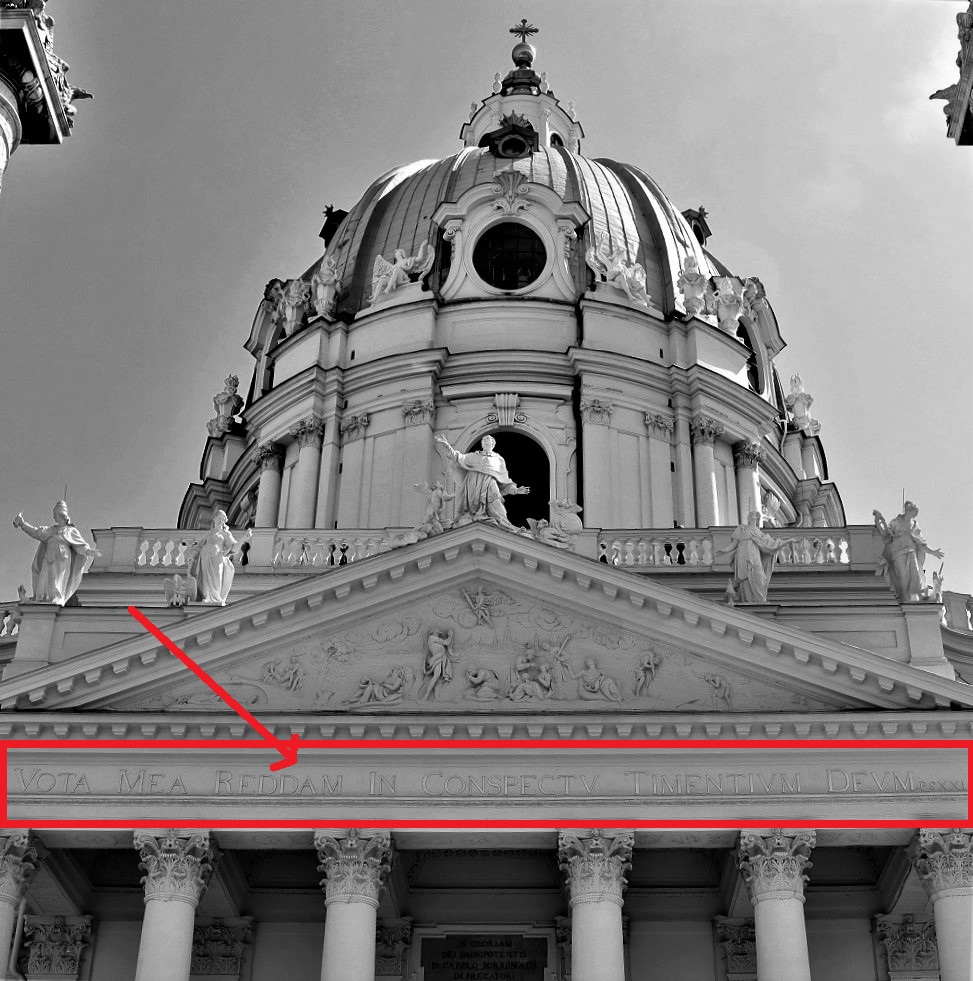
The inscription on the front of the temple refers to the history of the origin of the Karlskirche in Vienna that reads:

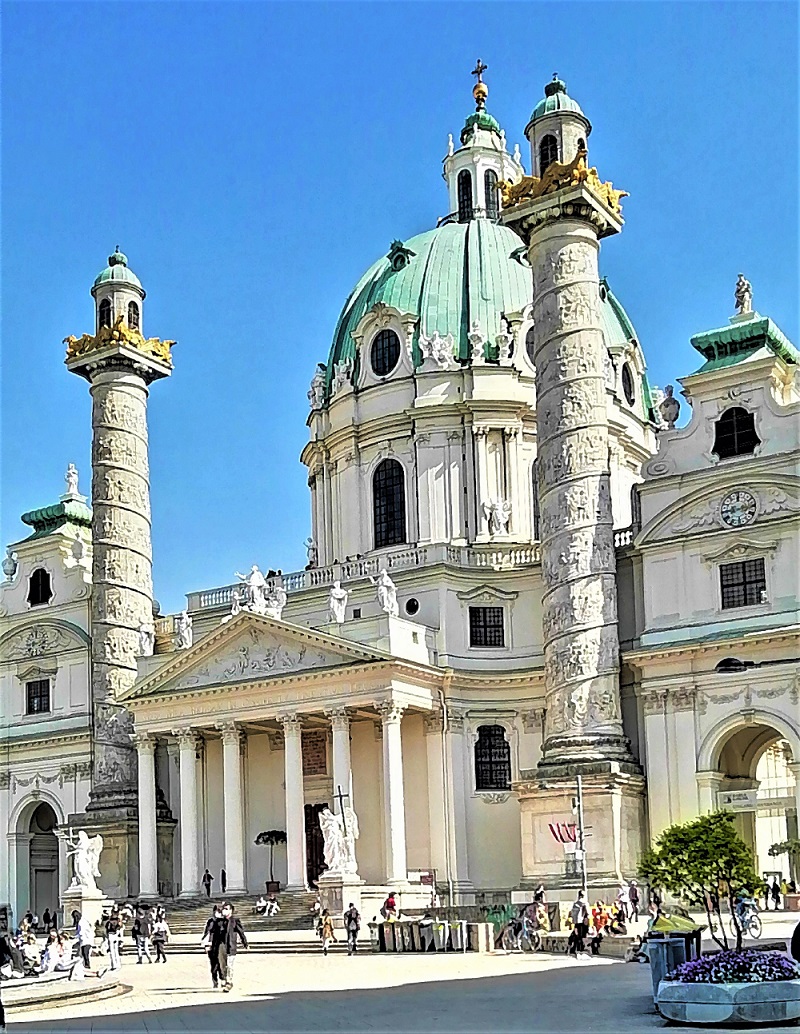
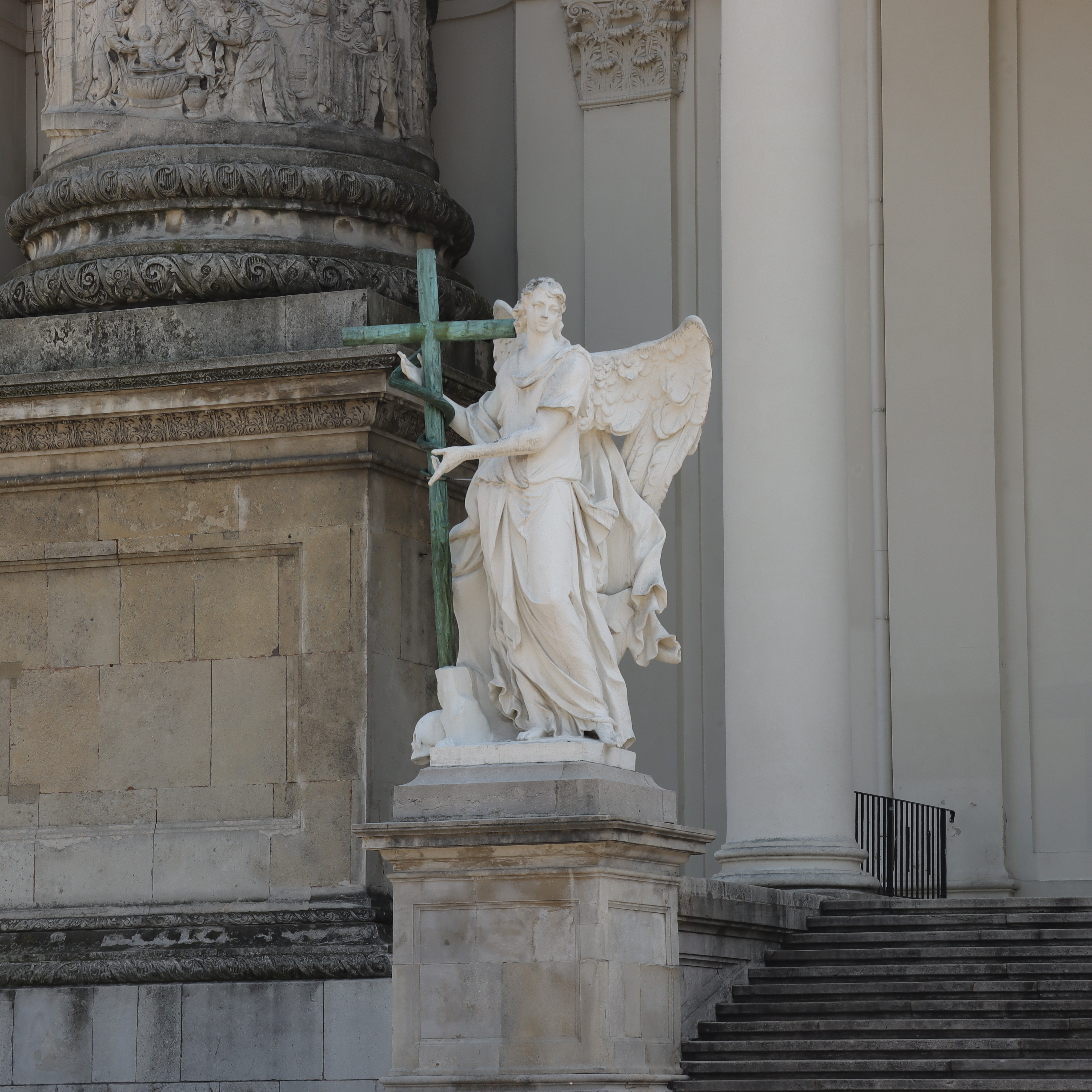

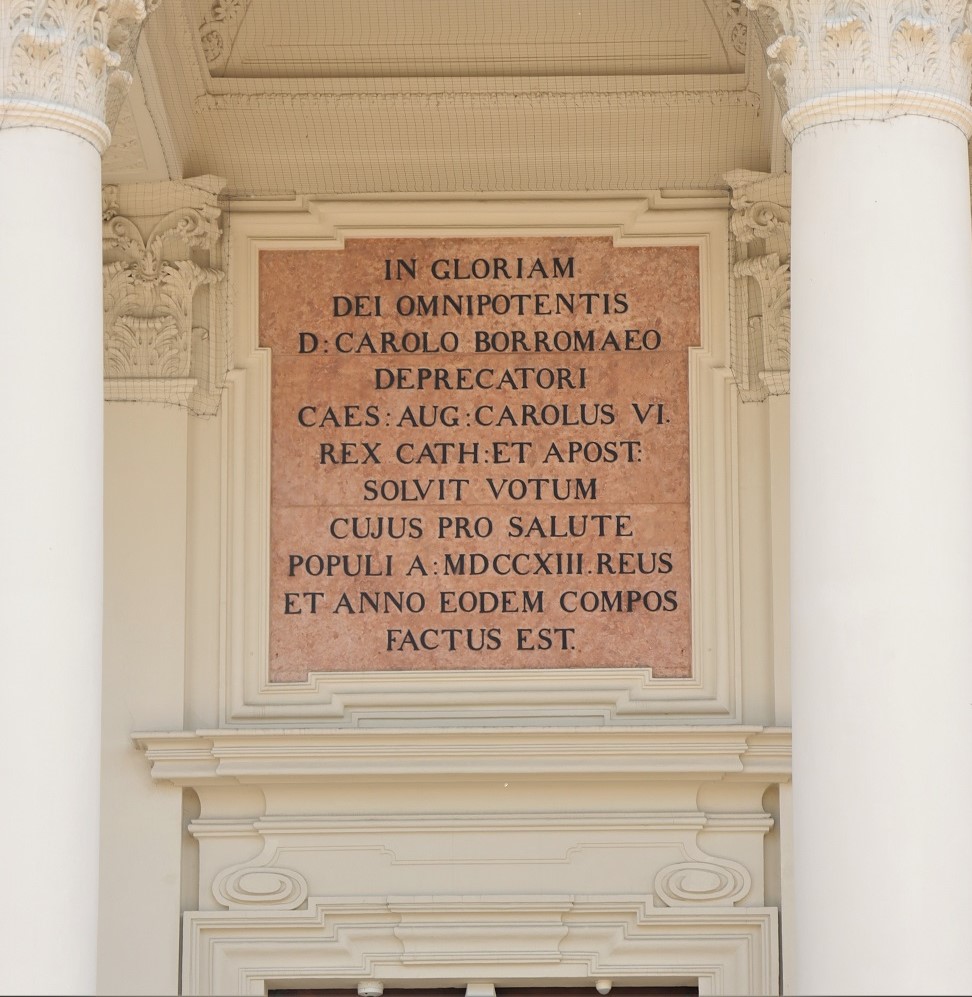


The magnificent interior and the opulent Frescoes
I was so astonished to see the beautiful frescoes, they are everywhere, every room, every floor level, side chapels are full of them. Because the church is undergoing restoration, they set-up a temporary lift at a height of 32.5.meters for the restoration thereby giving a chance for the visitors to take a closer look at the frescoes of the dome as well as the view of the surroundings of the church.

The dome´s frescoes painted by Johann Michael Rottmayr (1654-1730) can be viewed so near thru the temporary lift provided by the church admins. The images depict the votive theme of Jesus´s deliverance of the people from the plague in answer to the prayers of St. Charles Borromeo.

The high altar was designed by the son architect Joseph von Erlach where he used the most impressive free standing marble columns. St Charles is positioned above the tabernacle with the reliefs of the four evangelists.

The six various side altars were painted by the greatest painters of their time i.e. Daniel Gran, Sebastiano Ricci, Giovanni A. Pellegrini, Martin Hohenberg and Jacob van Schuppen.









Claude Le Fort du Plessy (d.1757) designed the pulpit, pews, confessionals and other furniture of the church. The pulpit shown here had been modified in the 19th century but was restored to its original state during the renovation in 2007. As seen here, the pulpit is back to its amazing gilded surfaces which had been the feature of the then High Baroque era.

A beautiful lodge used by the emperor when hearing the Holy Mass... take note of the elevation of this area because it was built higher than the pulpit and the people but a bit lower than the image of St. Charles Borromeo.


The Dome Frescoes by Johann Michael Rottmayr (1654-1730)






To sum it up, the Karlskirche is a great symbol of people's suffering from the last plague epidemic as narrated by the reliefs in the two columns at the exterior parts of the church. The interior depicted the glorification of the emperor as well as the deliverance of the people from the plague epidemic. There is no doubt that Karlskirche is one of the greatest masterpieces in the history of architecture.
If you would like to know more info on Karlskirche, you can
refer to the following references here and here
All images are owned by @mers
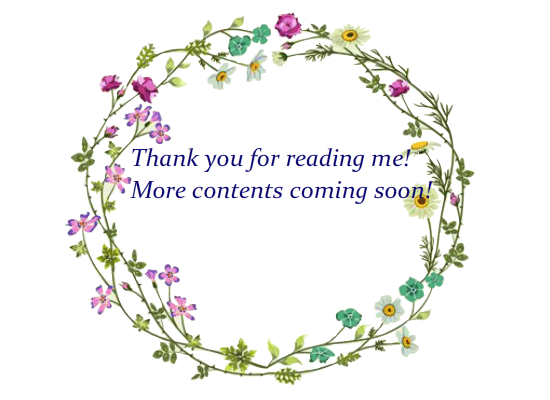
GIF by @gremayo
Also credits to the Association of the Friends and Patrons of
St. Charles Church, Vienna for the publication of informations in the pamphlet
KarlsKirche as authored by Stefan Lakonig (www.karlskirche.at)
refer to the following references here and here
All images are owned by @mers

Also credits to the Association of the Friends and Patrons of
St. Charles Church, Vienna for the publication of informations in the pamphlet
KarlsKirche as authored by Stefan Lakonig (www.karlskirche.at)
St. Charles Church, Vienna for the publication of informations in the pamphlet
KarlsKirche as authored by Stefan Lakonig (www.karlskirche.at)
The rewards earned on this comment will go directly to the person sharing the post on Twitter as long as they are registered with @poshtoken. Sign up at https://hiveposh.com.
Thanks Erne..
With huge pleasure @mers! 😊
Congratulations @mers!
You raised your level and are now a Dolphin!
Check out the last post from @hivebuzz:
Oh really, wow Thanks!!! sending a big hug to you! Cheers!
Congratulations on becoming a Dolphin @mers 🎉🎉🎉
That is indeed good news, thank you. The next level should be very hard, it will take ages, lol! Cheers!
Yeah, it took me some time to reach the current one. Anyway, looking forward to you becoming an Orca 😅
@tipu curate
Upvoted 👌 (Mana: 27/37) Liquid rewards.
Many thanks for the curation. Appreciate that you dropped-by @claudio83. Wishing you a great week ahead.
Thank you @tipu..
A masterpiece of a genius, thanks for sharing a century year old artwork.
Hive on!
Indeed, it is breathtaking inside and out..
Thank you for sharing this amazing post on HIVE!
Your content got selected by our fellow curator @priyanarc & you just received a little thank you via an upvote from our non-profit curation initiative!
You will be featured in one of our recurring curation compilations and on our pinterest boards! Both are aiming to offer you a stage to widen your audience within and outside of the DIY scene of hive.
Join the official DIYHub community on HIVE and show us more of your amazing work and feel free to connect with us and other DIYers via our discord server: https://discord.gg/mY5uCfQ !
If you want to support our goal to motivate other DIY/art/music/homesteading/... creators just delegate to us and earn 100% of your curation rewards!
Stay creative & hive on!
An amazing piece of history and arts, very characteristics of Baroque architecture...detailed forms and decorations. Thank you for sharing.
Indeed, a very impressive church inside and out. Thanks.
Great architecture! They ate really creative and I remember the church that was built by Spaniards .
Yep, their churches have great architecture too. Many thanks for visiting.
Baroque style lavishly showcased the rich architecture, art and craftsmanship found in Austria. I mean look at that intricate moldings, "bas reliefs", domes frescoes and the marble elements?What a breathtakingly beautiful structure.
Thanks for this great publication @mers 👌
Thanks for dropping-by @arkicarls.. Yep, they are really fantastic arts and architectural style I have ever seen in my entire life.
Thanks for your very detailed introduction of this great monument. The frescoes are just so vibrant! A visit to karlskirche is now in my bucket list next time I’m in Vienna
!hivebits
Success! You mined .9 HBIT & the user you replied to received .1 HBIT on your behalf. mine | wallet | market | tools | discord | community | <>< daily
Congratulations @mers! We're delighted to specially curate your awesome publication and award it RUNNER-UP in Architecture Brew #67. More power!
Thank you for subscribing to Architecture+Design, an OCD incubated community on the Hive Blockchain.
Many thanks for including my post in your Architecture Brew #67. Appreciate it!
You are most welcome dear @mers. Keep up the fantastic posts! 😀
If I only have the time in the world, I could post so many of these beautiful structures...Thanks.
Oh yes, @mers. That's what's absolutely beautiful about architecture! There is an infinite abundance of them existing around the world. And if only we have an entire lifetime to showcase them in our beloved community, that would surely be awesome! 😀👍
Super dooper well explained history of this majestic church.
Thank you.
Catholic churches are well known for their amazing building structure with this touch of ancient taste and definitely this one wasn't excluded
Definitely true... especially during the 15th-18th Century, there were so many artisans who worked for the church and gave their best shots of their skills...
This is an amazing building, the dome is a work of art. Be very well preserved, by the way great photos 👌🏻📸
Thank you.. Glad you appreciate its beauty.
Great architecture! They ate really creative and I remember the church that was built by Spaniards .
Hello, @mers. Do you have a Twitter or Discord account where we can contact you in private?
Hi Erne!
My Twitter is ...https://twitter.com/tannenring
I ´ve had a problem with Discord because of some Java script... so I don´t use it anymore.
Okay, that's great @mers. I just followed you on Twitter. Would you mind following me back please so I can send you a DM? Thank you. 😊
Done... I seldom use my twitter account tho...:(
Thank you @mers. I just sent you a DM on Twitter. 😊